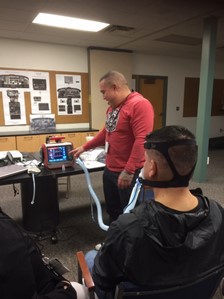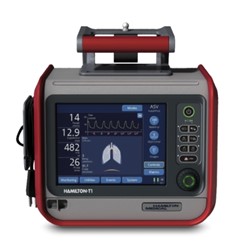When it comes to transporting ventilated patients, CSI Aviation Inc. has you covered. Our critical care-trained staff are experts on all modes of ventilation. We use the Hamilton-T1 ventilator, which offers both invasive and noninvasive forms of ventilation for adults, pediatrics, and neonatal patients alike.

CSI Aviation medical staff undergoing ventilator training
How Patients are Ventilated:
When we arrive at the hospital to pick up a patient, we bring our ventilator with us. Patients are attached to our ventilator while bedside. We always perform a trial run of our ventilator and its settings to ensure the patient’s ability to tolerate it.
- To expedite the transfer, a nasogastric (NG) or orogastric (OG) should be placed for every ventilated patient prior to CSI arrival.
CSI Aviation Ventilator Training:
All CSI Aviation paramedics and nurses are extensively trained on invasive, non-invasive, and obscure modes of ventilation and ventilator management. Our team members are trained in critical care medicine, including advanced airway and ventilator management, and have significant experience in hospital ICUs and ERs, as well as ambulance environments.
The Hamilton-T1 Ventilator

Hamilton-T1 Ventilator
The Hamilton-T1 ventilator is approved for air medical transport and for use by the US Military. Some of our reasons for using it include:
- Providing Invasive and Non-Invasive modes of ventilation for adults, pediatrics, and neonates.
- Multiple modes of ventilation:
- Volume ventilation
- Pressure ventilation
- Invasive and noninvasive modes of ventilation including biphasic modes.
- Obscure modes of ventilation such as APRV
- “Intelligent” ventilation using the proprietary Adaptive Support Ventilation (ASV)
The Hamilton-T1 ventilator is widely considered the most advanced and modern transport ventilator on the market and is even used by the Mayo Clinic. Its highly functional technology directly mirrors larger units in ICUs and emergency rooms. It can mimic any mode of ventilation being provided to the patient in the hospital and allows us to make our aircraft into a fully operational mobile ICU.



